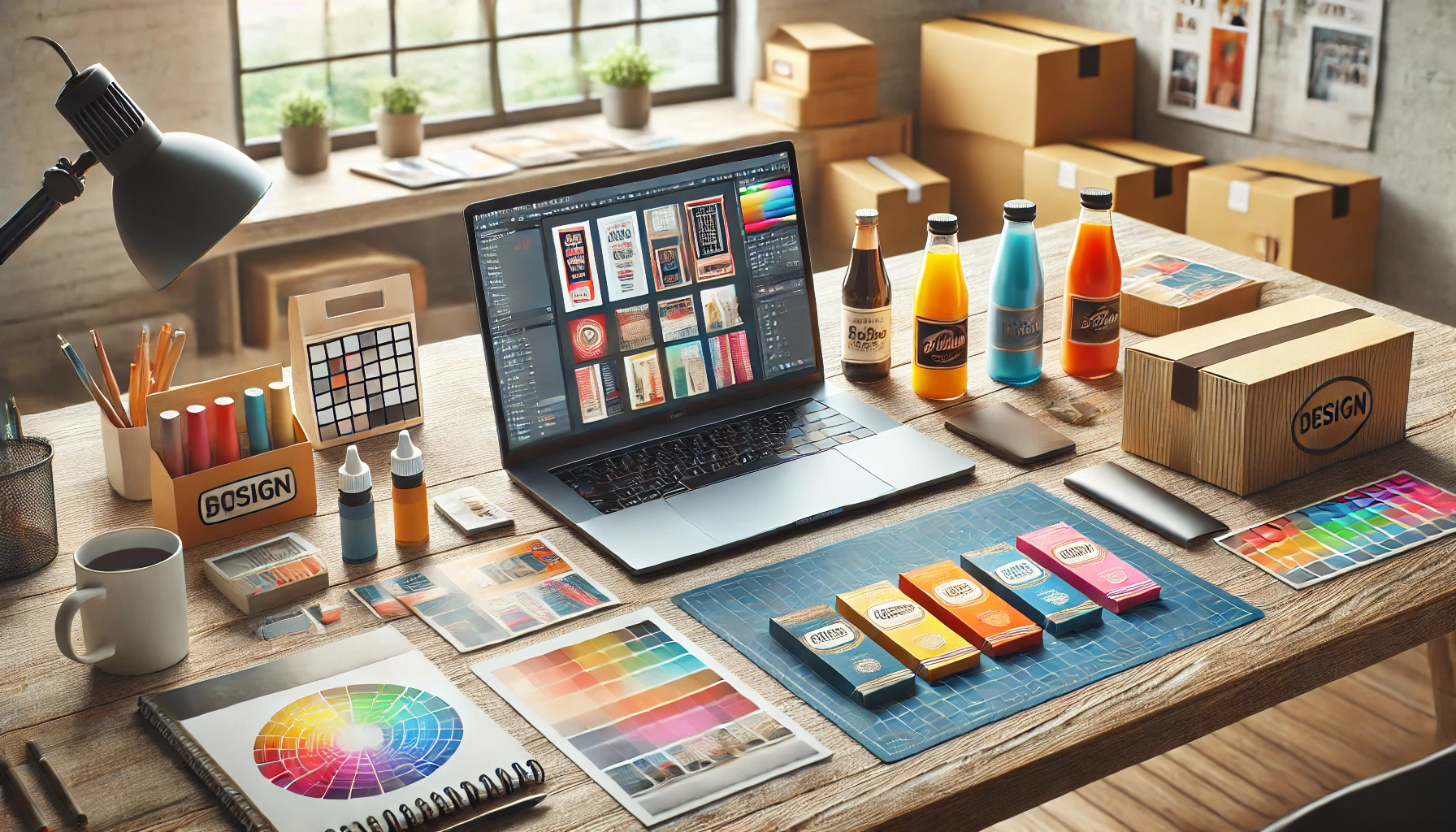Packaging design is a crucial area of graphic design that combines functionality and aesthetics to attract consumers and communicate brand values. A well-designed package can make all the difference in how a product is perceived and its sales success.
In this article, we’ll explore a step-by-step guide for creating impactful packaging, from initial planning to final design.
Understand the Product and Target Audience
Before you start, it’s essential to understand the product and who it’s for.
Key Questions:
- What does the product offer, and what makes it unique?
- Who is the target audience (children, adults, professionals, etc.)?
- Will the product be used in specific environments (home, office)?
💡 Tip: Packaging for a younger audience can have vibrant colors and playful elements, while a corporate audience might prefer minimalist and sophisticated designs.
Choose the Type of Packaging
There are different types of packaging, and the choice depends on the product.
- Boxes: Used for electronics, gifts, and delicate products.
- Bags: Ideal for food or small products.
- Tubes or Bottles: Used for cosmetics, beverages, and liquid foods.
- Labels: Applied to bottles, jars, or cans.
💡 Tip: Ensure the packaging type is functional and user-friendly.
Consider Sustainability
More and more consumers are looking for products with eco-friendly packaging.
- Sustainable Materials: Recycled paper, bioplastics, or reusable packaging.
- Reduce Excess: Avoid unnecessary layers to minimize environmental impact.
💡 Example: Cosmetic brands are adopting refillable packaging to reduce plastic usage.
Work on the Visual Identity
The packaging is an extension of the brand’s identity.
- Logo and Brand Colors: Should be present and well-integrated into the design.
- Style: Choose an aesthetic that reflects the product’s personality (minimalist, rustic, modern).
💡 Tip: Use the brand’s style guide to ensure consistency.
Plan the Layout
Sketch the initial layout of the packaging.
Key Elements:
- Product name.
- Legal or nutritional information.
- Usage instructions, if necessary.
- Callouts or highlights (e.g., “100% natural,” “new”).
💡 Helpful Tool: Use Canva or Adobe Illustrator to create digital layouts.
Choose the Right Colors
Colors directly influence consumer emotions and perceptions.
- Bright Colors: Indicate energy and fun (great for kids’ products or snacks).
- Neutral Colors: Convey sophistication and simplicity.
- Green and Blue: Associated with natural and sustainable products.
💡 Tip: Use tools like Adobe Color to explore harmonious palettes.
Choose Fonts Carefully
Typography should be legible and match the tone of the packaging.
- Serif Fonts: For classic and elegant packaging.
- Sans-Serif Fonts: For a modern, clean look.
- Handwritten Fonts: For a personal, handcrafted touch.
💡 Tip: Ensure the main information is large enough for quick reading.
Work with Mockups
Before finalizing the design, visualize how it will look applied to the packaging.
- Use 3D mockups to simulate the design on bottles, boxes, or labels.
- Tools like Smartmockups or Adobe Dimension make this process easier.
💡 Tip: Review proportions and colors in the mockups for final adjustments.
Include Unique Features
Make your packaging stand out with distinctive touches:
- Textures or Finishes: Such as matte lamination, embossing, or metallic details.
- Flaps and Windows: Allow the customer to see the product before opening.
- Custom Illustrations: Create a unique and artistic look.
💡 Example: Packaging with innovative openings or that forms shapes is more memorable.
Test Usability
Ensure the packaging is functional:
- Durability: It should protect the product during transportation and use.
- Ease of Opening: Avoid designs that frustrate the consumer.
- Ergonomics: It should be comfortable to hold or carry.
💡 Tip: Ask for feedback from a test group to evaluate the user experience.
Common Mistakes (and How to Avoid Them)
Cluttered Design:
- Problem: Too much information makes the packaging confusing.
- Solution: Simplify the design and prioritize essential elements.
Illegible Text:
- Problem: Small fonts or low contrast.
- Solution: Test readability in different lighting conditions.
Misalignment with the Brand:
- Problem: The packaging doesn’t reflect the brand’s style.
- Solution: Use visual elements consistent with the brand’s identity.
Tools for Creating Packaging Designs
- Adobe Illustrator: For creating detailed vector layouts.
- Canva: Ideal for simple and quick designs.
- Smartmockups: To visualize packaging in 3D.
- Adobe Dimension: For creating professional renderings.
Conclusion: Packaging That Delights
Creating impactful packaging design requires creativity, attention to detail, and a good understanding of the product and audience. With the steps outlined here, you can develop packaging that stands out on the shelves and leaves a lasting impression.

